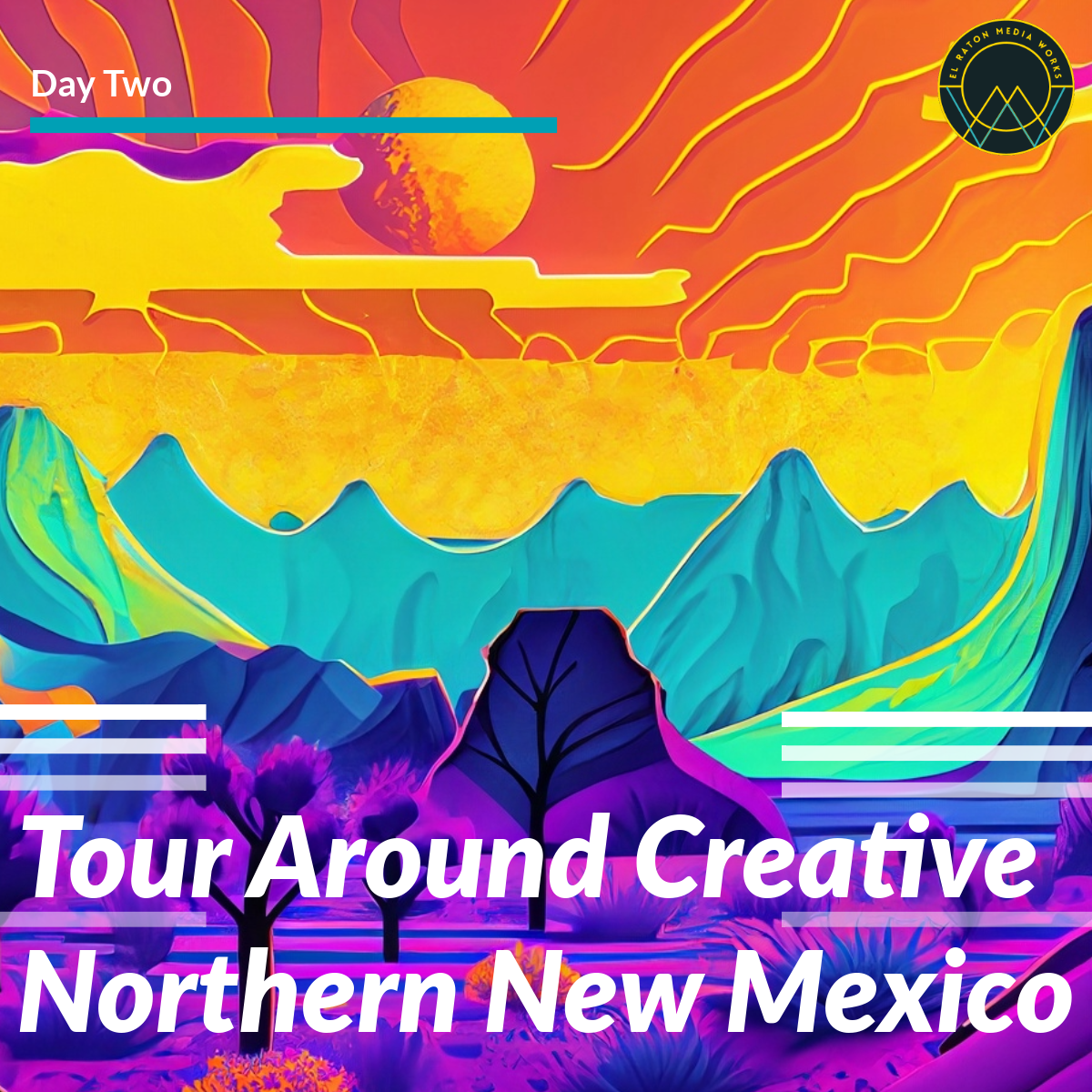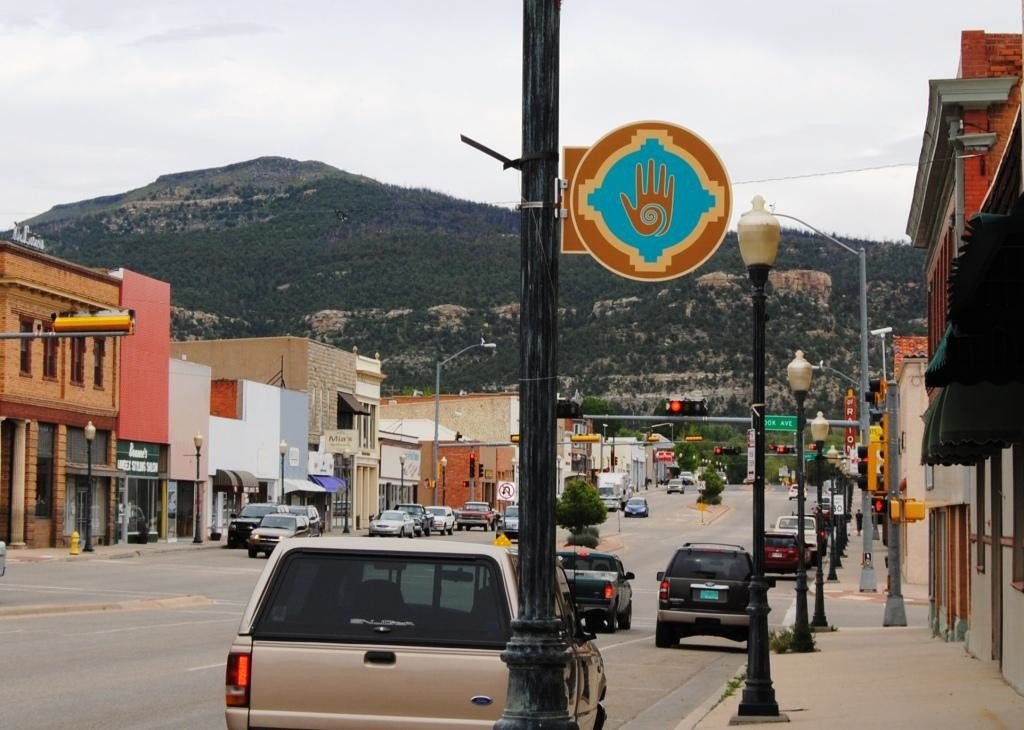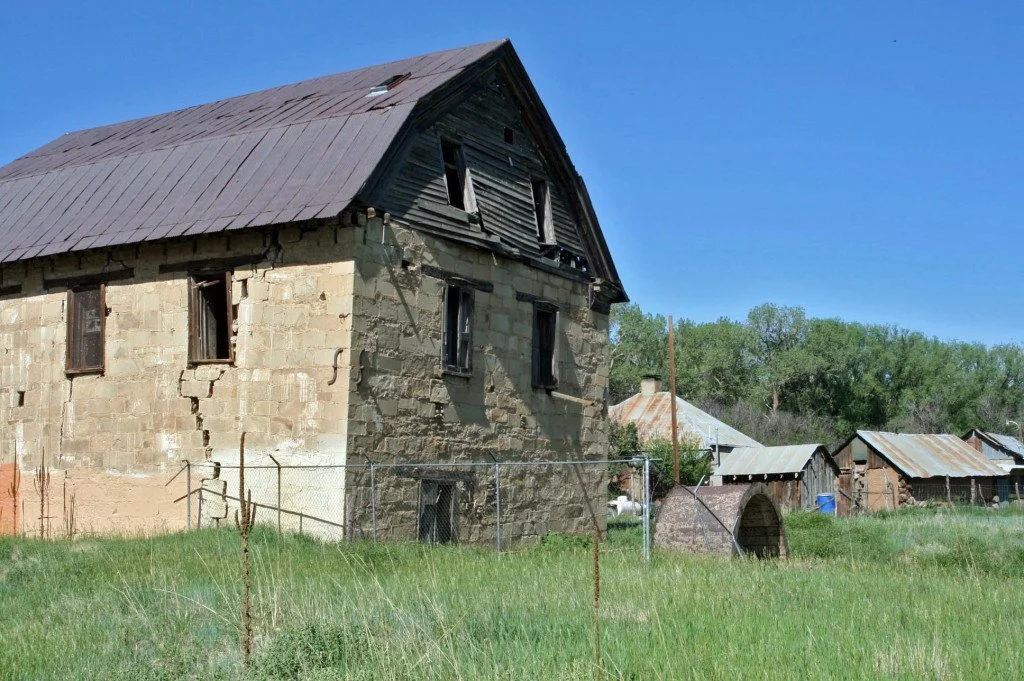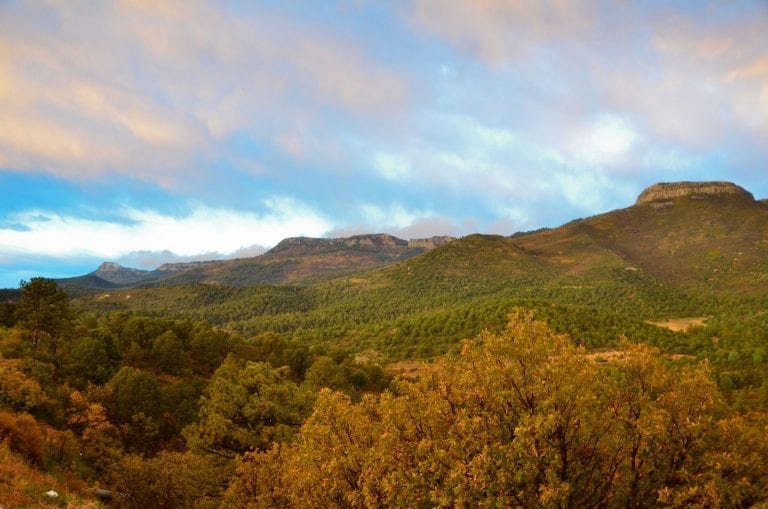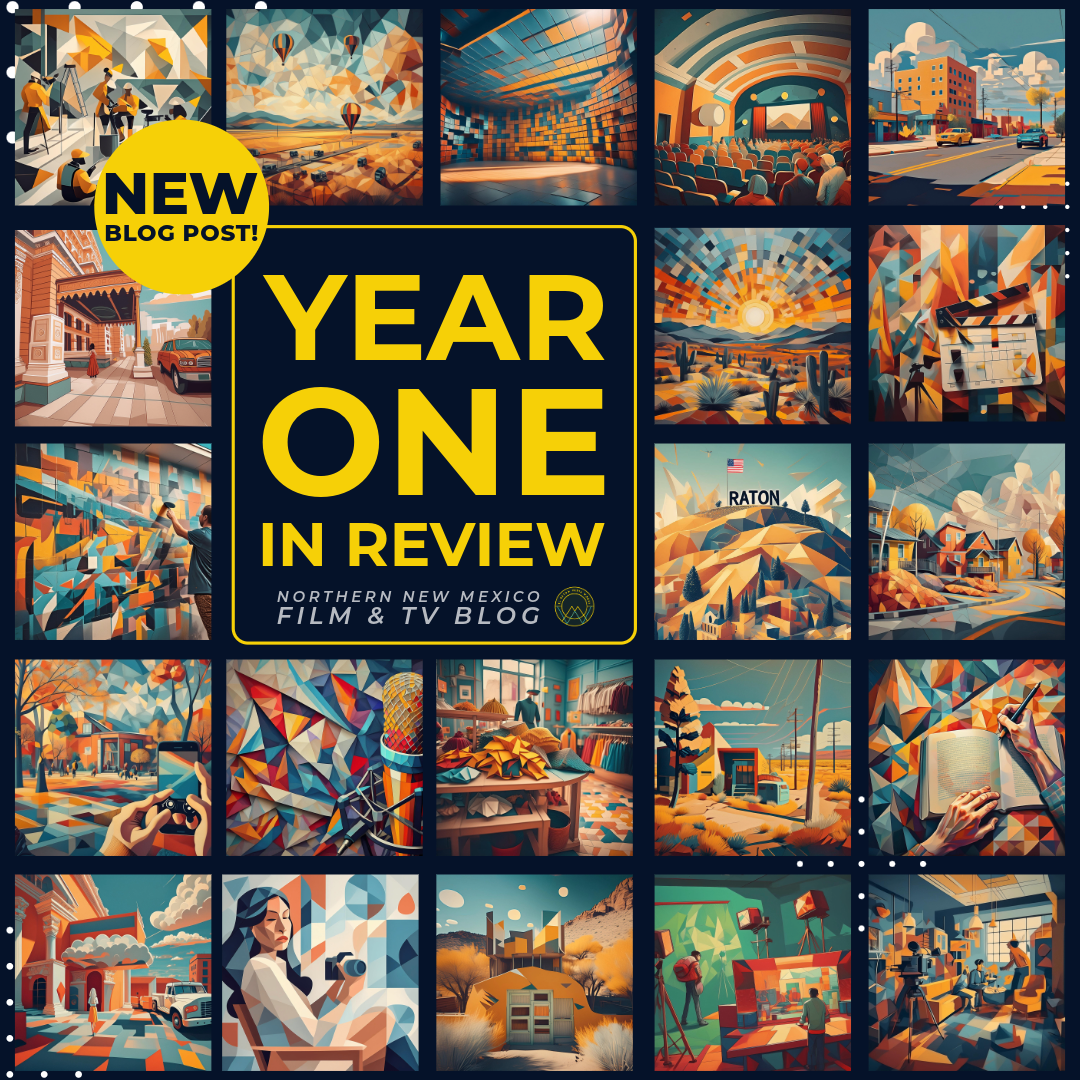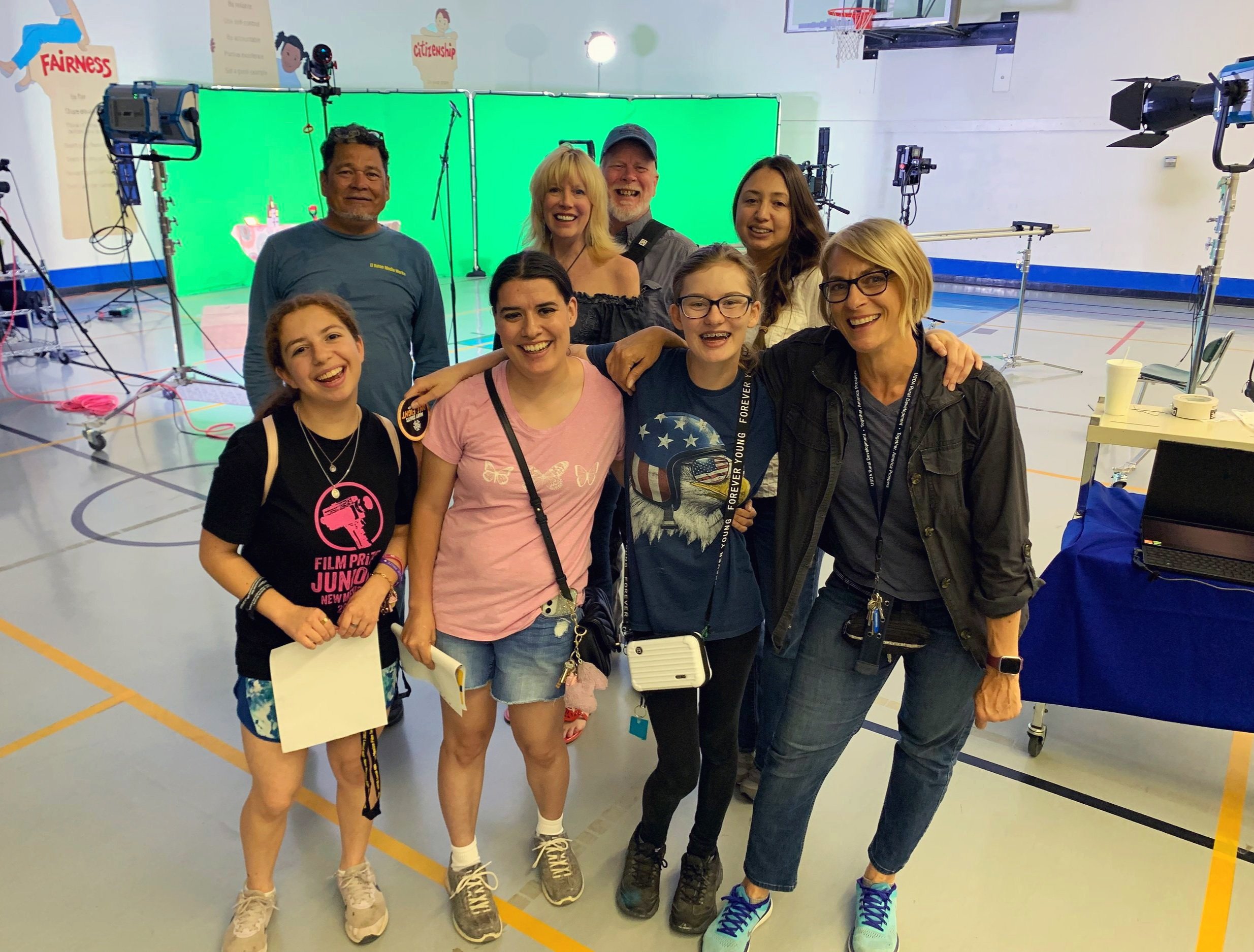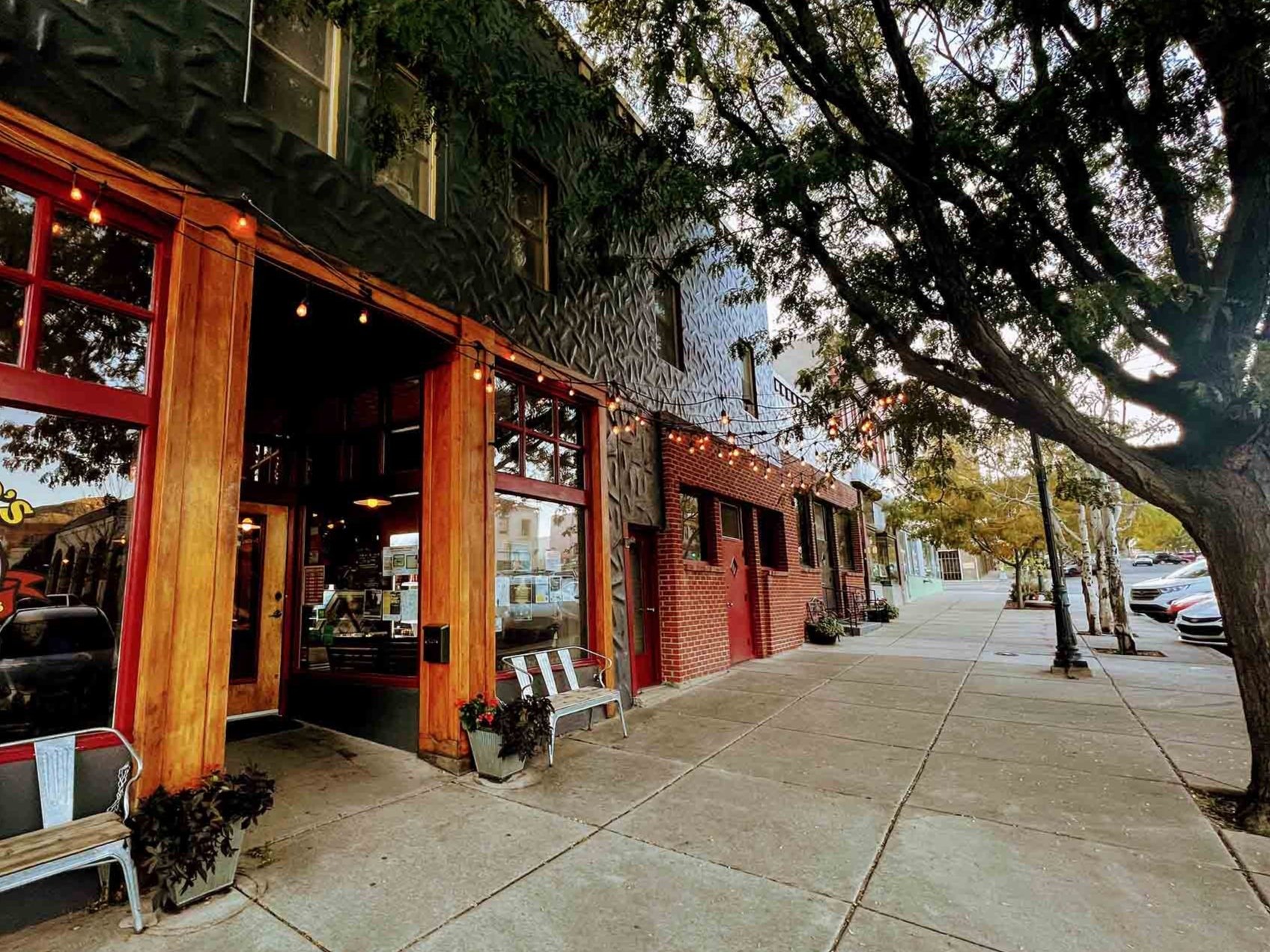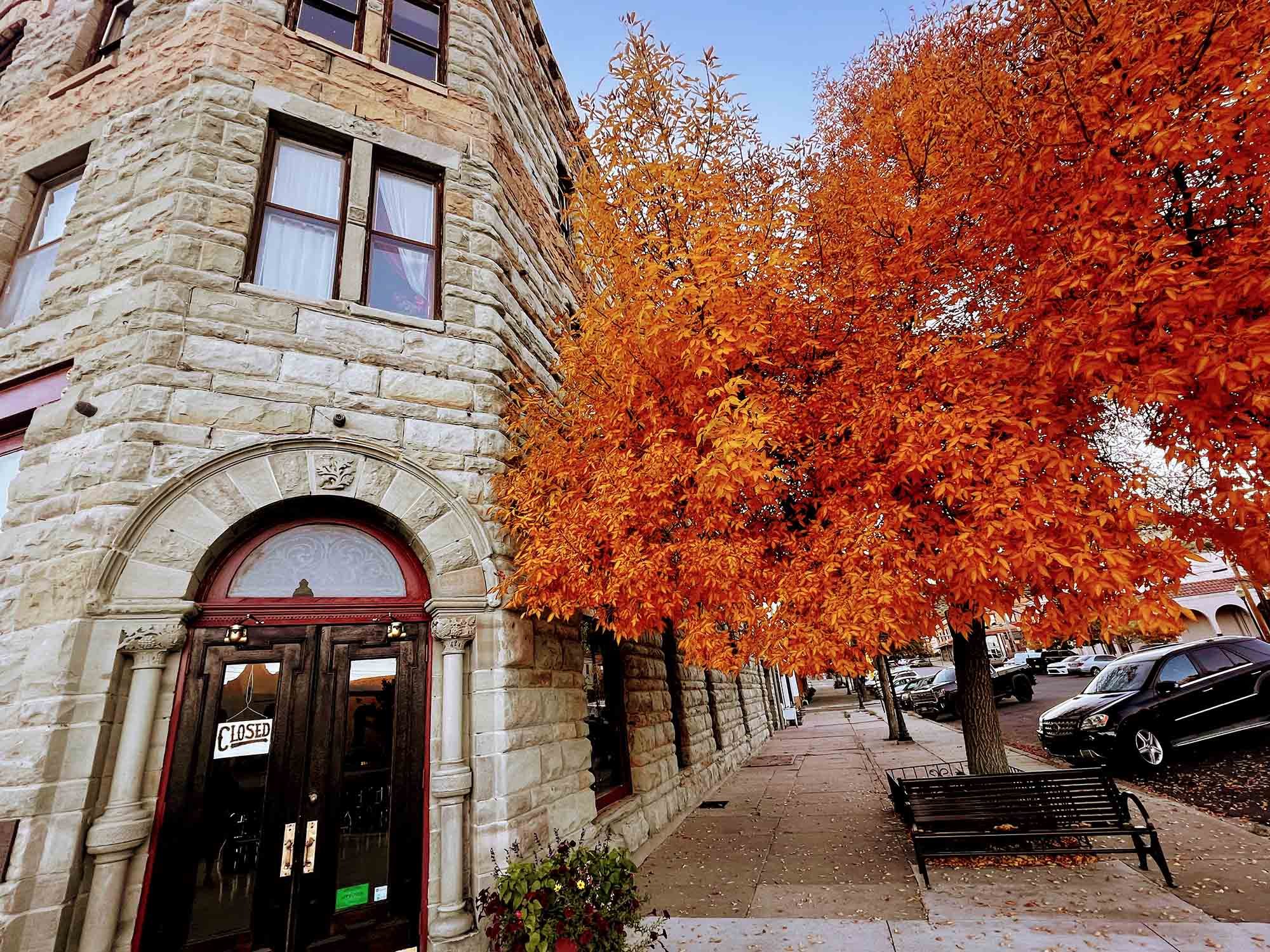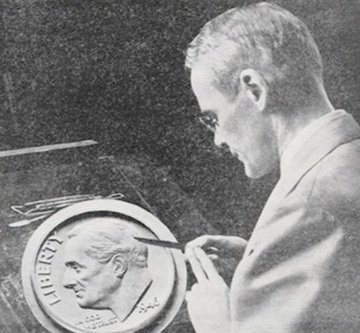Tour Around Creative New Mexico: Northern New Mexico
By ERMW Team
Friday, May 3, 2024
New Mexico's northern reaches are a treasure trove of artistic expression, steeped in rich cultural heritage and stunning landscapes. If you're seeking a creative journey, embark on day two of tour through this vibrant region, where tradition and innovation intertwine.
Raton: Frontier Spirit Meets Contemporary Creativity
Downtown Raton by MainStreet Arts & Cultural District
Starting off on our journey for today, we begin at the border of Colorado in Raton, which is nestled halfway between Albuquerque and Denver on I-25, and surprises visitors with its blend of historic charm and a blossoming creative scene. With a wide variety of events hosted annually by Grow Raton, Main Street Raton, and other dedicated organizations, this gem of a town is rich in cultural happenings. The restored Shuler Theater serves as a cultural hub, hosting performances, exhibitions, and events spotlighting both local artists and national talent. Prefer the art of nature? Raton also has this covered, being situated in the Rocky Mountains and nearby a wide variety of world class sporting recreation areas such as the Whittington Center, several State Parks, and Vermejo Ranch.
Estimated Population (2024): 6,289
Climate: A transition zone between lower desert and higher mountain climates.
Geographic Area: 8.1 square miles
Industries in Raton:
Ranching & Agriculture: Raton's location makes it a hub for ranching and related agricultural activity.
Tourism: History and outdoor recreation draw visitors, creating demand for tourism-related businesses.
Transportation & Logistics: Highway and rail lines contribute to a transportation sector.
Government: As the county seat of Colfax County, Raton has a significant public sector.
Healthcare: With a regional demand for healthcare services, the healthcare sector provides jobs and is important for Raton residents and those in the surrounding region.
Fun fact: Raton Pass is a significant location along the Santa Fe Trail and played a role in the westward expansion of the United States.
Mora: Echoes of the Past in Mountain Beauty
Mora Arts & Cultural Compound by New Mexico Arts & Cultural Districts
Nestled in the Sangre de Cristo Mountains, Mora breathes with a rich history. Explore a town where echoes of the Wild West, Hispanic heritage, and Taos Revolt linger. Wander the scenic Mora Valley, dotted with historic adobe buildings and old mills that hint at a time gone by. Enjoy outdoor recreation amidst stunning mountain landscapes, and uncover a welcoming community filled with artistic spirit.
Estimated Population (2024): 500 (village) / 4,200 (Mora County)
Climate: Four distinct seasons, cool summers, potential for significant winter snowfall due to elevation.
Geographic Area: 8.04 square miles
Industries:
Agriculture: Ranching remains a cornerstone of the Mora Valley economy.
Tourism: History buffs, outdoor enthusiasts, and those seeking a quieter pace.
Local Government: County seat of Mora County provides some jobs.
Education: Mora Independent Schools are an important employer for the area.
Arts & Crafts: Presence of artists and galleries showcasing local work.
Fun fact: Cleveland Roller Mill in Mora is the oldest working gristmill in New Mexico, still processing local grains using traditional methods.
Angel Fire: Mountain Adventure Meets Creative Spirit
Angel Fire by Davishan99, CC BY-SA 3.0, via Wikimedia Commons
Nestled high in the Sangre de Cristo Mountains, Angel Fire is a haven for outdoor enthusiasts and those seeking an escape into New Mexico's breathtaking scenery. Begin your journey with a ride on the scenic chairlift, offering panoramic views and access to mountain trails. Discover the vibrant history of the area at the Vietnam Veterans National Memorial, a poignant and moving tribute. Embrace the mountain lifestyle – explore hiking and biking trails, try your hand at fly-fishing in Monte Verde Lake, or hit the slopes at Angel Fire Resort during the winter months. For a touch of the unexpected, find unique shops and galleries in the town center, showcasing the works of artists inspired by their alpine surroundings.
Estimated Population (2024): Angel Fire is a small village, estimated roughly 1,150 people.
Climate: Mountainous with four distinct seasons. Expect warm summers, cool nights, potential snow in winter, and vibrant fall foliage.
Geographic Area: 29.0 square miles
Industries in Angel Fire:
Tourism & Recreation: Angel Fire Resort is a major draw, creating demand for hospitality, activities, and related services.
Retail & Dining: Businesses catering to visitors and residents form a core part of the economy.
Real Estate & Second Homes: The area's natural beauty attracts second-home owners, supporting the real estate sector.
Construction: Development and maintenance of homes and resort facilities support the construction industry.
Outdoor Services: Outfitting, guiding services, and equipment rental provide jobs related to the area's outdoor recreation opportunities.
Fun fact: Angel Fire is home to the highest elevation zip line tour in the United States.
Española: Crossroads of Cultural Traditions
The Misión Museum y Convento, Plaza de Española in Española by JerryFriedman, CC BY-SA 3.0 , via Wikimedia Commons
Española's artistic pulse beats strongest in its deep connection with Hispanic heritage. Explore traditional plazas and adobe architecture that speak to the town's Spanish colonial past. Visit the Misión de los Tres Culturas, a museum celebrating the blending of Native American, Hispanic, and Anglo influences that shaped the region. Support local artists at the Northern New Mexico College's impressive El Rito campus and gallery, showcasing the diverse talents of the region's emerging and established artists.
Estimated Population (2024): 10,953
Climate: Semi-arid with some variation.
Geographic Area: 8.0 square miles
Industries in Espanola:
Government & Education: The presence of Northern New Mexico College and public school systems creates a large employment base.
Healthcare: Healthcare services, potentially related to the aging population, are likely a significant industry.
Retail: Serving the wider region surrounding Española, the retail sector is likely prominent.
Construction: Ongoing development within the city and surrounding areas supports construction jobs.
Agriculture: While less dominant than in the past, traditional agriculture still plays a role in the area.
Fun fact: The Puye Cliff Dwellings near Española offer a chance to explore the ancient ruins of Ancestral Puebloan dwellings.
Chimayo: Weaving Wonders and Sacred Ground
Santuario de Chimayo by MARELBU, CC BY 3.0, via Wikimedia Commons
For centuries, Chimayo has been renowned for its exquisite textiles. Watch master weavers transform colorful threads into intricate patterns on traditional looms. Learn about the deep cultural significance of this craft passed down through generations. Experience the spiritual draw of the Santuario de Chimayo, a small adobe chapel believed to hold healing powers. Don't miss the opportunity to purchase a unique woven piece to take home – a testament to the enduring artistry of Chimayo.
Estimated Population (2024): 3,306
Climate: Semi arid with some precipitation due to being close to the mountains.
Geographic Area: 5.5 square miles
Industries in Chimayo:
Religious Tourism: The Santuario de Chimayo is a major pilgrimage site, driving the local economy.
Traditional Arts & Crafts: Chimayo weaving and other traditional crafts are vital to the town's economic and cultural identity.
Agriculture: Small-scale farming continues to be practiced in the area.
Hospitality: Businesses cater to religious tourists and visitors seeking a unique cultural experience.
Local Services: Small businesses providing services to the resident population.
Fun fact: It's said that the soil around the Santuario de Chimayo has healing properties, drawing pilgrims for centuries seeking wellness.
Red River, NM: Enchanting Mountain Escape for All Seasons
Red River by BlazeMan6103, CC BY-SA 4.0, via Wikimedia Commons
Nestled amidst the Sangre de Cristo Mountains, Red River beckons outdoor enthusiasts and relaxation seekers alike. Beyond seasonal activities, Red River boasts a rich history and welcoming atmosphere. Explore the McCall's Museum to delve into the town's mining roots, or unwind in the natural hot springs for a truly rejuvenating experience. Red River offers something special for everyone, making it a cherished getaway destination.
Estimated Population (2024): 1,400 (town) / 4,800 (county)
Climate: Mountain climate with four distinct seasons. Summers are mild and winters are snowy.
Geographic Area: 1.0 square mile
Industries:
Tourism: The main driver of the economy, with skiing, hiking, fishing, and other outdoor activities attracting visitors year-round.
Retail & Services: Supporting the tourism industry with shops, restaurants, and lodging options.
Construction: Maintaining ski infrastructure and supporting some residential development.
Local Government: Town and county government provide some employment opportunities.
Real Estate: Second-home ownership and vacation rentals contribute to the economy.
Fun fact: Red River offers activities like gold panning and llama trekking for unique summer adventures.
Taos: Where Art and History Collide
Taos by Christopher Michel, CC BY 2.0 , via Wikimedia Commons
Taos is a town that has drawn artists for centuries. Delve into Taos' long history as an artists' colony – stroll along the galleries of Ledoux Street, visit the Taos Art Museum, or explore the legacy of the Harwood Museum of Art, showcasing masterpieces from renowned Taos artists past and present. Let the rugged beauty of the Sangre de Cristo Mountains and the town's unique ambiance ignite your own creativity. Or visit Taos Pueblo, a UNESCO World Heritage Site, which stands as a testament to a vibrant and enduring way of life in the region and explore this multi-story adobe complex, a symbol of Puebloan culture for over a millennium.
Estimated Population (2024): Taos: 5,976
Climate: Semi-arid with four distinct seasons.
Geographic area: 13.9 square mile
Industries in Taos:
Tourism: Taos's art scene, ski valley, and historical sites make tourism a primary driver of the economy.
Healthcare: The presence of Holy Cross Medical Center indicates a significant healthcare sector.
Arts & Culture: Galleries, studios, and events contribute heavily to the town's unique economy.
Retail: Shops catering to tourists and locals make up a significant portion of Taos's business landscape.
Government & Education: As a county seat, Taos likely has a sizable public sector.
Fun fact: Just outside of Taos, a steel deck arch bridge offers breathtaking views of the Rio Grande Gorge. It’s a favorite spot for photographers and adventurers, and you might recognize it from some TV shows and movies as it’s a popular spot for tourists and film crews alike!
Your Creative Journey Awaits
Shops in Taos, by MARELBU, CC BY 3.0, via Wikimedia Commons
Northern New Mexico offers endless possibilities for artistic discovery. Whether you are moved by traditional craftsmanship, inspired by iconic landscapes, or fascinated by cultural heritage, this tour will awaken your senses. Get off the beaten path, explore local galleries, and engage with the artists themselves. Let the creative spirit of New Mexico infuse your own journey.
Tips for Your Tour
Plan around events: Many of these towns host annual festivals and art shows like the Taos Fall Arts Festival. Check local calendars for enriching experiences.
Embrace the slow pace: Allow time to immerse yourself in each location and connect with the local arts scene.
Support Local Artists: Purchase art directly from artists and studios to support the local creative economy.
We continue our journey through the Creative Towns of New Mexico tomorrow in Beautiful Eastern New Mexico, so be sure to visit again!
Additional Notes:
Microclimates: Smaller towns can have localized weather variations due to their proximity to mountains, rivers, etc.
Local Resources: Some towns or counties might have their own population estimates and predictions.
Town vs. Surrounding Area: Census data may not distinguish between the developed limits of a town and the larger unincorporated area around it.
CDPs: The size of CDPs will vary depending on how the Census Bureau defines its boundaries
State Projections: The New Mexico Department of Finance and Administration might have population projections on their website (https://www.nmdfa.state.nm.us/).


